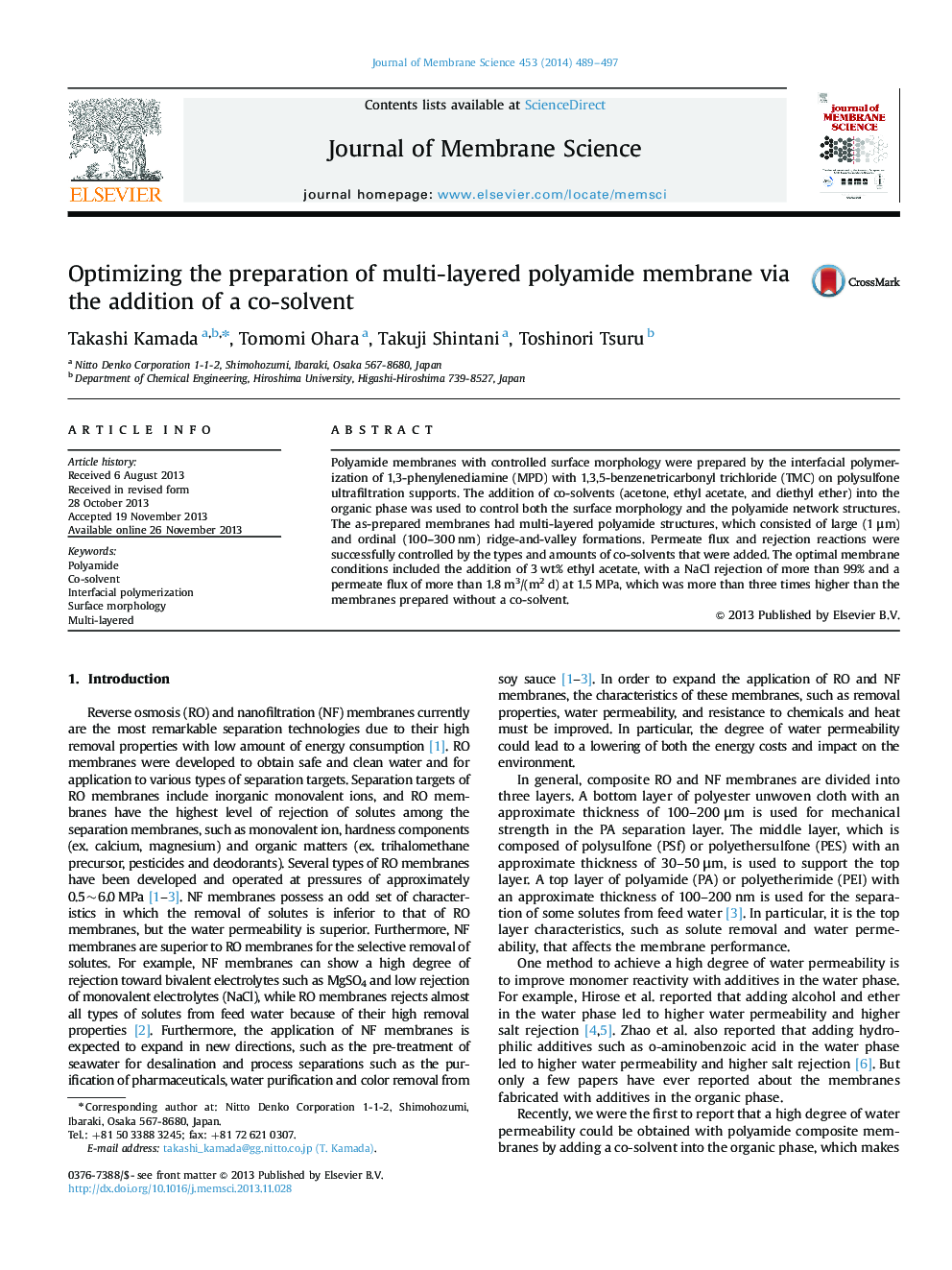| کد مقاله | کد نشریه | سال انتشار | مقاله انگلیسی | نسخه تمام متن |
|---|---|---|---|---|
| 633808 | 1456046 | 2014 | 9 صفحه PDF | دانلود رایگان |
• We propose a novel technique, interfacial polymerization using the addition of co-solvent.
• In a novel method, the surface morphologies were controlled by the types and amount of co-solvents.
• In a novel method, both permeate flux and rejection were controlled by the types and amount of co-solvents.
• 3 wt% ethyl acetate-added membranes show 3 fold flux of a membrane without a co-solvent.
Polyamide membranes with controlled surface morphology were prepared by the interfacial polymerization of 1,3-phenylenediamine (MPD) with 1,3,5-benzenetricarbonyl trichloride (TMC) on polysulfone ultrafiltration supports. The addition of co-solvents (acetone, ethyl acetate, and diethyl ether) into the organic phase was used to control both the surface morphology and the polyamide network structures. The as-prepared membranes had multi-layered polyamide structures, which consisted of large (1 μm) and ordinal (100–300 nm) ridge-and-valley formations. Permeate flux and rejection reactions were successfully controlled by the types and amounts of co-solvents that were added. The optimal membrane conditions included the addition of 3 wt% ethyl acetate, with a NaCl rejection of more than 99% and a permeate flux of more than 1.8 m3/(m2 d) at 1.5 MPa, which was more than three times higher than the membranes prepared without a co-solvent.
Journal: Journal of Membrane Science - Volume 453, 1 March 2014, Pages 489–497
